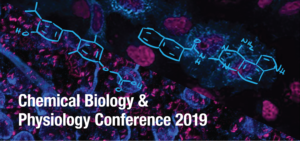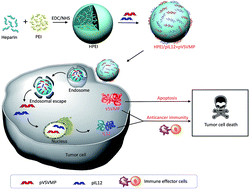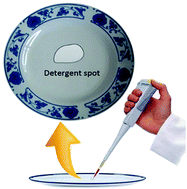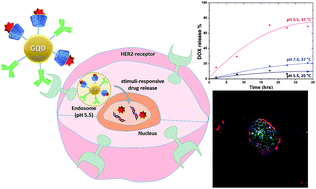Looking back at 2019, we would like to highlight some of the great research that has been published in RSC Advances over the year. We are proud to present a selection of the most popular 2019 articles published on ionic liquids so far.
We hope you enjoy reading these articles – free to read and accessible to everyone.
Happy New Year from the RSC Advances team!
Cycloaddition of atmospheric CO2 to epoxides under solvent-free conditions: a straightforward route to carbonates by green chemistry metrics
Aazam Monfared, Robab Mohammadi, Akram Hosseinian, Shahriar Sarhandi and Parvaneh Delir Kheirollahi Nezhad
RSC Adv., 2019,9, 3884-3899. DOI: 10.1039/c8ra10233c
Review
Photostability and photocatalytic degradation of ionic liquids in water under solar light
Jorge Bedia, Juan José Rodriguez, Daniel Moreno, José Palomar and Carolina Belver
RSC Adv., 2019,9, 2026-2033. DOI: 10.1039/c8ra07867j
Glyme-Li salt equimolar molten solvates with iodide/triiodide redox anions
Keisuke Shigenobu, Azusa Nakanishi, Kazuhide Ueno, Kaoru Dokko and Masayoshi Watanabe
RSC Adv., 2019,9, 22668-22675. DOI: 10.1039/c9ra03580j
Correlation between lipophilicity of newly synthesized ionic liquids and selected Fusarium genus growth rate
Milan Vraneš, Aleksandar Tot, Jasenka Ćosić, Snežana Papović, Jovana Panić, Slobodan Gadžurić, Nenad Janković and Karolina Vrandečić
RSC Adv., 2019,9, 19189-19196. DOI: 10.1039/c9ra02521a
Solubility model of metal complex in ionic liquids from first principle calculations
Anwesa Karmakar, Rangachary Mukundan, Ping Yang and Enrique R. Batista
RSC Adv., 2019,9, 18506-18526. DOI: 10.1039/c9ra04042k
Catalytic synthesis of chloroacetates with thermoregulated ionic liquids based on vanadium-substituted polyoxometalate
Jingsen Yan, Zeqing Wang, Yongsheng E, Fengwei He, Danfeng Zhang and Qingyin Wu
RSC Adv., 2019,9, 8404-8410. DOI: 10.1039/c8ra10659b
Absorption and thermodynamic properties of CO2 by amido-containing anion-functionalized ionic liquids
Yanjie Huang, Guokai Cui, Huiyong Wang, Zhiyong Li and Jianji Wang
RSC Adv., 2019,9, 1882-1888. DOI: 10.1039/c8ra07832g
Heterogeneous photocatalytic performances of CO2 reduction based on the [Emim]BF4 + TEOA + H2O system
Jinliang Lin, Youfeng Li and Bo Xie
RSC Adv., 2019,9, 35841-35846. DOI: 10.1039/c9ra06235a
Thermo-responsive draw solute for forward osmosis process; poly(ionic liquid) having lower critical solution temperature characteristics
Changha Ju, Chanhyuk Park, Taehyung Kim, Shinwoo Kang and Hyo Kang
RSC Adv., 2019,9, 29493-29501. DOI: 10.1039/c9ra04020j
Synthesis of novel functional ionic liquids and their application in biomass
Hui-Ying Han, Xin Geng, Bi-Xian Zhang, Jing Meng, Xin Liu, Xin-Miao He, Zi-Guang Liu, Yun-Fei Gao, Di Liu and Xiao-Mei Hu
RSC Adv., 2019,9, 29652-29658. DOI: 10.1039/c9ra06243b
Physicochemical compatibility of highly-concentrated solvate ionic liquids and a low-viscosity solvent
Keitaro Takahashi, Yuki Ishino, Wataru Murata, Yasuhiro Umebayashi, Seiji Tsuzuki, Masayoshi Watanabe, Hiromitsu Takaba and Shiro Seki
RSC Adv., 2019,9, 24922-24927. DOI: 10.1039/c9ra04797b
Extraction of DNA from complex biological sample matrices using guanidinium ionic liquid modified magnetic nanocomposites
Mei Liu, Xueqin Ding, Xuelian Wang, Jianzhong Li, Huansheng Yang and Yulong Yin
RSC Adv., 2019,9, 23119-23128. DOI: 10.1039/c9ra01505a
Cross-linked poly(ionic liquid) as precursors for nitrogen-doped porous carbons
Shifu Cheng, Bihua Chen, Li Qin, Yongya Zhang, Guohua Gao and Mingyuan He
RSC Adv., 2019,9, 8137-8145. DOI: 10.1039/c8ra10022e

Submit to RSC Advances today! Check out our author guidelines for information on our article types or find out more about the advantages of publishing in a Royal Society of Chemistry journal.
Keep up to date with our latest HOT articles, Reviews, Collections & more by following us on Twitter. You can also keep informed by signing up to our E-Alerts.














